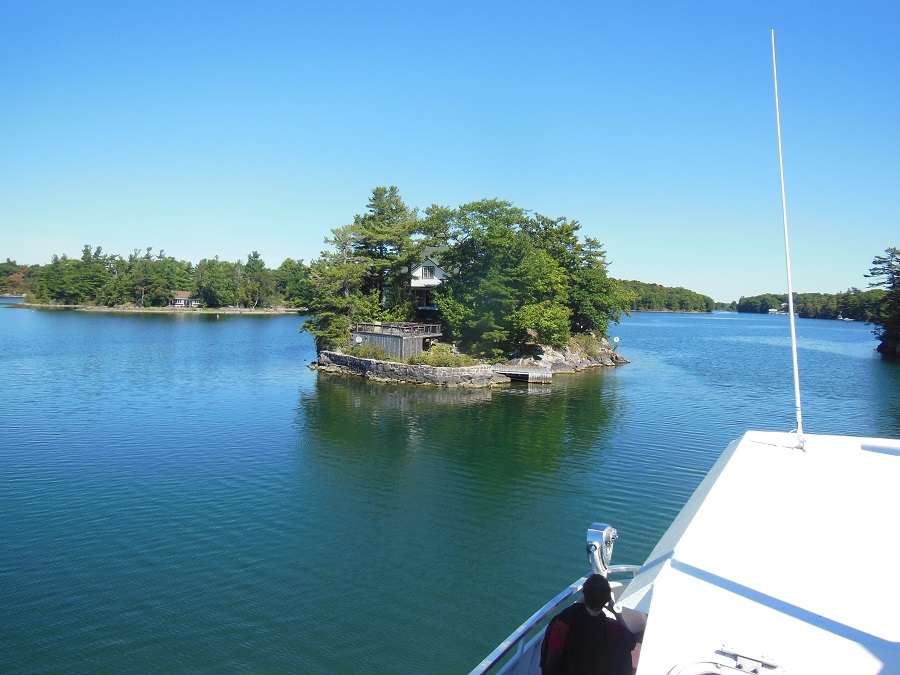Peace be with you. (Gananoque town motto)
It’s been almost 25 years since I have been to Gananoque, and it charmed me as much now as it did then. Gananoque is an aboriginal name meaning ‘the meeting of two rivers’. It’s where the Gananoque River flows into the St. Lawrence, and where you can find calm from your busy life.

It was a beautiful, sunny morning when I parked the van and explored the town by foot. I immediately walked past some locals who greeted me with a hearty ‘good morning’, a friendliness that was welcome and consistent with my last visit. And I didn’t get much past the public library and across the town hall grounds when the smell of coffee drew me to the Socialist Pig Coffee House, set in a charismatic stone building, constructed in 1810.

Americano in hand, I sat outside to relax and watch the world go by. A number of times, town residents greeted one another by name, stopped to chat briefly, and left with wishes for a splendid day, something I don’t see very much in other tourist locales. It was like I was in a little Canadian oasis of friendly familiarity.
After finishing my coffee, on a whim, I bought a ticket for the one-hour Thousand Islands tour. There were longer tours to be had, up to five hours long, but I still had a long drive ahead before the end of the day.

The Gananoque Boat Line vessel was busy with tourists, and although all of the seats were taken, I managed to get a standing spot in the corner of the upper deck. As the tour proceeded, the sitting folks saw the viewing advantages of my corner spot and slowly crowded around me. However, the obvious dangers of having a seagull perched directly above me gave me a little bit of elbow room.

It turns out that in the Thousand Islands, there are actually 1,865 islands, that is, land masses of at least six square feet of ground cover and a minimum of two trees, many of which have been in the same families for over 100 years.

The tour passed exclusively through Canadian waters, although the Thousand Islands area is split between Canada and the United States. When the international line was drawn, the governments were careful to ensure that the line did not pass through an island. The result is that the land mass of the Thousand Islands is split equally between the two countries, although Canada contains two-thirds of the islands.

These islands are granite bedrock, part of a Precambrian mountain range that has been worn down by successive glaciations. Except for the islands protected by the St. Lawrence Islands National Park, the smallest national park in Canada, most are privately owned by summer dwellers.

Although, years ago, there was one man found living on an island year round. When he was discovered during the negotiation of a land sale, he had been living there for 25 years. He was 107. A hearty and proud Canadian, he was. Well done, sir.


